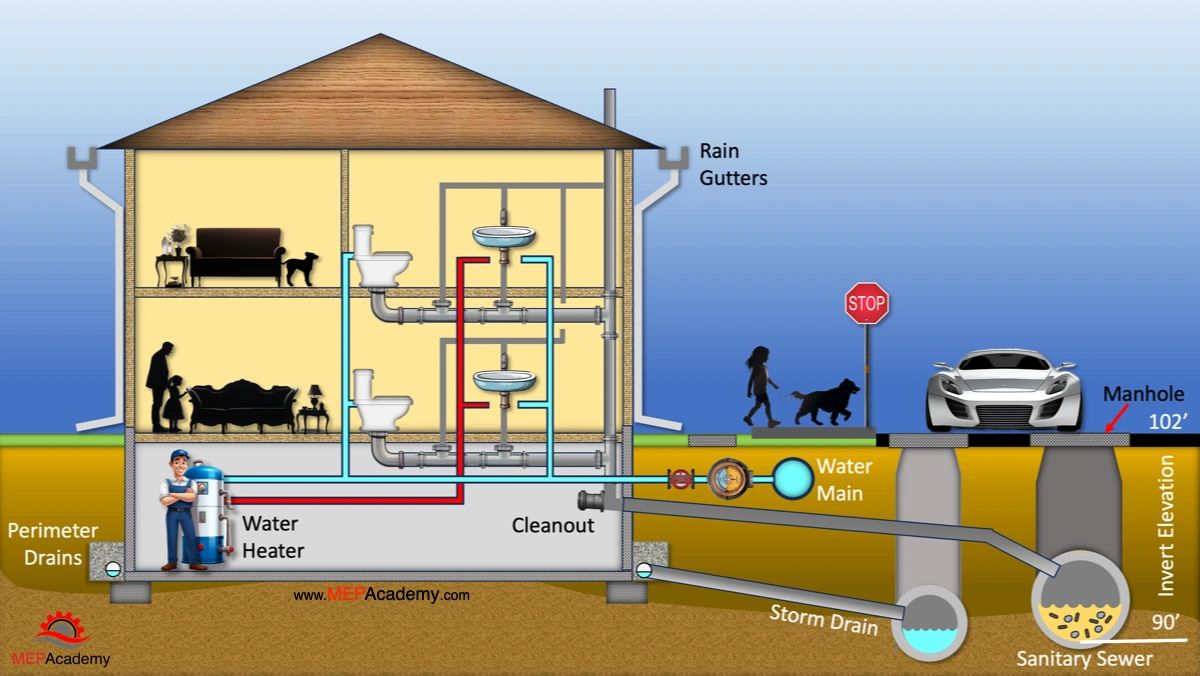
Surface Water vs. Foul Water: Understanding the Difference
Managing water around your home is crucial for maintaining your property and protecting the environment. Proper drainage systems ensure that both surface water and foul water are handled efficiently and safely. Whether you're working with bespoke builders, property developers, or a bespoke construction company, understanding the basics of water management is essential. Here, we explain the differences between these two types of water with insights from experts in the field.

What is Surface Water?
"Surface water is basically the water that collects from rainwater falling onto properties," says approved Checkatrade member and founder of BK Plumbing, Brett Knowles. "The surface water drainage installed will allow this to drain away, where in most cases, it eventually goes to rivers, brooks, and streams."
For those investing in bespoke custom build projects or working with house builders, planning for proper surface water drainage is vital from the early design phase.
What is Foul Water?
"Foul water, on the other hand, is the dirty water from all the appliances and sanitaryware in your property," explains Brett. "It's the water that is created from flushing toilets, using sinks, washing machines, dishwashers, and so on."
If you're working with bespoke building services or managing a developing house, it's essential to factor in separate foul water systems in your planning and construction process.
Key Differences in Drainage Systems
Although some pipework elements in each system can be similar, the drainage systems for surface water and foul water work in fundamentally different ways.
Foul Water Drainage System
A foul water drainage system consists of plastic or clay pipework that runs underneath and through your property, connecting to the outlets where wastewater is directly discharged—such as toilets, appliances, and sinks.
"As the water is 'foul' or dirty, it cannot enter directly into the ground or public sewers in the way that surface water can," says Brett. "Therefore, the internal pipes will firstly feed into soil stacks, which in turn connect to underground pipes. These then connect to an existing public foul water drainage system where the contents discharge into treatment works that are managed by your local water authority."
In rural bespoke builds, alternative solutions such as septic tanks are often used. These are especially relevant for bespoke home builder projects that are off-grid or have limited access to public infrastructure.
Surface Water Drainage System
"Surface water should not be combined with foul drainage and therefore is a separate and independent drainage system," explains Mark.
One major difference is that surface water can be disposed of on-site in soakaways, whereas foul water cannot. Alternatively, a surface water collection system, also known as SuDS (Sustainable Drainage Systems), can be used to reuse the surface water for non-potable purposes like flushing toilets.
In some cases, an eco-friendly full wastewater system with reed beds treats the wastewater from foul drainage naturally, making it clean enough to discharge into an existing watercourse, soakaway, or land drain—an increasingly popular solution in bespoke construction projects.

Installation and Regulations
"A foul water drainage system in a new property is installed at the start, along with all the groundwork," says Brett Knowles.
"For surface water, as the drainage system is separate and doesn’t enter the building, it is not necessary for its installation to take place during substructure construction," adds Mark. "However, it’s almost impossible to prevent damage to the foul drainage system when excavating trenches at a later date for surface water drainage, and therefore installation is usually completed at the same time."
Builders offering bespoke construction services understand the importance of integrating drainage planning during the early stages of a project, especially for bespoke constructions in challenging or unique environments.
Building Regulations and Planning
Both systems must comply with Approved Document H, which outlines the building regulations requirements for drainage. Experts design your drainage system and provide comprehensive advice on meeting these regulations. However, there are several areas homeowners need to be aware of:
If your foul water drainage cannot connect to the public system, ensure you are up to date on whether you need planning permission for a septic tank.
Surface water drainage plans are set to change, with SuDS becoming mandatory in homes to help address rising flood issues. Be sure to read up on the latest surface water drainage regulations in the UK.
For bespoke builders and property developers, staying ahead of these regulations ensures your project remains compliant and future-proof.
Conclusion
Understanding the difference between surface water and foul water is essential for proper drainage management around your home. By installing the correct systems and adhering to regulations, you can ensure efficient water management, protect your property, and contribute to environmental sustainability. Whether you're working with a bespoke builder or managing a bespoke build, partnering with experts will give you peace of mind and a well-functioning drainage system tailored to your home.

